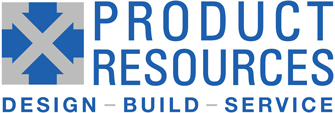Procurement, or purchasing, is a critical function in a manufacturing organization.
Far from simply buying parts, procurement involves selecting suppliers for the parts needed based on the supplier’s ability to ship quality parts, on time, and for a competitive price. It is also the qualification and management of those suppliers using our QMS processes. For more information, please see Supply Chain Management.
Procurement begins as soon as certain pieces of information are in place. To buy any item, we need to know:
- Component Definition – describes a Component which is used on the Product. The Component can be a Commercial Off-The-Shelf (COTS) component or a Custom component (e.g., machined, sheet metal, or molded parts, custom Printed Circuit Board Assemblies, etc.). The Part Definition information that Product Resources requires is:
- Part Number and Description – this is necessary to uniquely identify the Part. Product Resources assigns our unique Item Number to the Part and cross-references our number with our Customer’s Part Number. This isn’t strictly necessary because we can just make up a unique number, but it is needed when cross-referencing an Assembly Drawing to the Customer’s Bill of Material.
- COTS Part – Part Manufacturer and Manufacturer’s Part Number. In certain instances, a supplier and a manufacturer are interchangeable, but it is important to understand the distinction. Manufacturers make the parts you are buying while suppliers are typically a network of distribution. We prefer documenting manufacturers because with that information we can source a part from multiple suppliers which gives Purchasing more flexibility.
- Custom Part – A Document, Drawing or set of Files which describes the Part. This could describe a sub-assembly, machined part, or PCBA, etc. See the Appendix – Custom Part Documentation for additional information.
- Quantity Required – this information is summarized from the Bill of Material and is the total needed for each unit of the product, times the number of products needed.
- Schedule – this information comes from a Purchase Order or Forecast from our Customer and details how many units to ship, and when. The product could be scheduled for a single shipment, or the shipments could be spread out with multiple deliveries over a year. The schedule for the material deliveries follows the schedule for the product (See Chp 1 Schedule) with adequate lead to allow for the material to arrive in time and be built into the product so that it can be tested and shipped on time.
With this information, we can identify Suppliers – they may be different from Manufacturers – and get a quote for the quantity on the schedule required. In many instances our customer has already identified a preferred supplier and we would typically utilize them for those parts.
Once the supplier has been chosen, we send a Purchase Order detailing the quantity, price, and schedule. Periodically, we will follow up with that supplier to make sure the schedule does not slip. This has been especially challenging here in Q3 of 2021.
